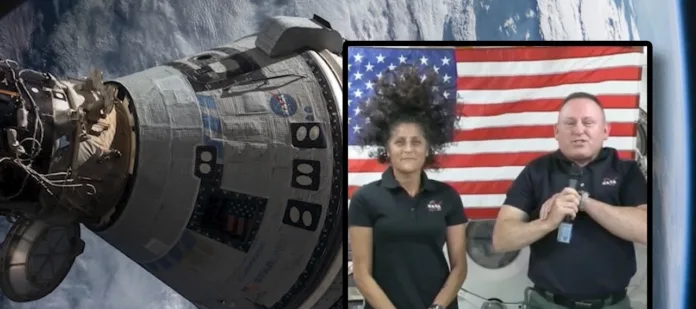Nasa considers alternative plans for astronauts’ homecoming amid ongoing technical problems with the starliner
Nasa astronauts Butch Wilmore and Suni Williams are stranded aboard the International Space Station (ISS) following delays with Boeing’s Starliner spacecraft. Originally launched in June for an eight-day test mission, the Starliner has been beset with technical difficulties, pushing the astronauts’ return indefinitely.
The trouble began when the Starliner experienced thruster malfunctions as it approached the ISS. Engineers detected additional issues, including helium leaks critical for thruster pressure, which led to immediate concerns about the spacecraft’s safety. Boeing’s remote testing efforts have yet to resolve these problems, and NASA is unsure whether the Starliner can safely bring its crew home.
Nasa has emphasized that the astronauts are not entirely stranded; they could return in an emergency. However, their planned return on the Starliner remains uncertain. Nasa and Boeing are exploring alternative options, including a potential ride home on a SpaceX Dragon spacecraft. This would involve swapping two seats on an upcoming SpaceX mission to accommodate Wilmore and Williams, delaying their return until February 2025.
The Starliner’s extended stay on the ISS has sparked additional concerns. The spacecraft is only rated for a 90-day mission, and with 63 days already spent in orbit, the clock is ticking. Nasa has been proactive in sending extra supplies to the ISS to support the astronauts, but extended stays pose risks regarding the spacecraft’s functionality and the astronauts’ well-being.
If the astronauts return on a SpaceX flight, Boeing will need to prepare the Starliner for an uncrewed return. This involves reconfiguring the spacecraft’s software for autonomous operation and ensuring it safely burns up upon re-entry. The spacecraft’s current extended presence at the ISS also means it will have to free up docking ports for upcoming missions, affecting future flight schedules.
Analysis
Political
The ongoing issues with the Starliner underscore the challenges faced by government contractors and public-private partnerships in space exploration. Nasa’s handling of the situation may influence future contracts and partnerships, potentially affecting policy decisions related to spaceflight and procurement. Additionally, the situation highlights the importance of robust oversight and accountability in space missions, reflecting on broader discussions about governmental roles in regulating and supporting commercial space ventures.
Social
The predicament of the Starliner astronauts has captured public attention, illustrating both the fascination and anxiety surrounding human spaceflight. As space missions become more routine, the public’s expectations for reliability and safety increase. This situation reflects societal concerns about the risks involved in space exploration and the need for transparent communication from space agencies and private companies.
Racial
While the current situation does not directly involve racial issues, it reflects broader themes of diversity and inclusion in space missions. The astronauts’ predicament highlights the need for diverse teams in engineering and space missions, as well as the importance of addressing any disparities in how different groups experience and respond to the challenges of space travel.
Gender
The presence of female astronaut Suni Williams on the Starliner mission brings attention to gender representation in space exploration. Her involvement in this high-profile situation emphasizes the progress made in including women in prominent roles within the space industry. However, it also underscores ongoing challenges in achieving gender parity and addressing the unique experiences of female astronauts in high-stress environments.
Economic
The delays and technical issues with the Starliner have significant economic implications. Boeing’s struggles with the spacecraft reflect broader risks associated with investing in new technologies and the financial impact of mission delays. The situation may affect Boeing’s financial performance and investor confidence, as well as the overall cost of space missions for NASA. Additionally, the need to reconfigure the Starliner for an uncrewed return and the extended stay of other spacecraft could lead to increased costs for future missions and operational adjustments.
